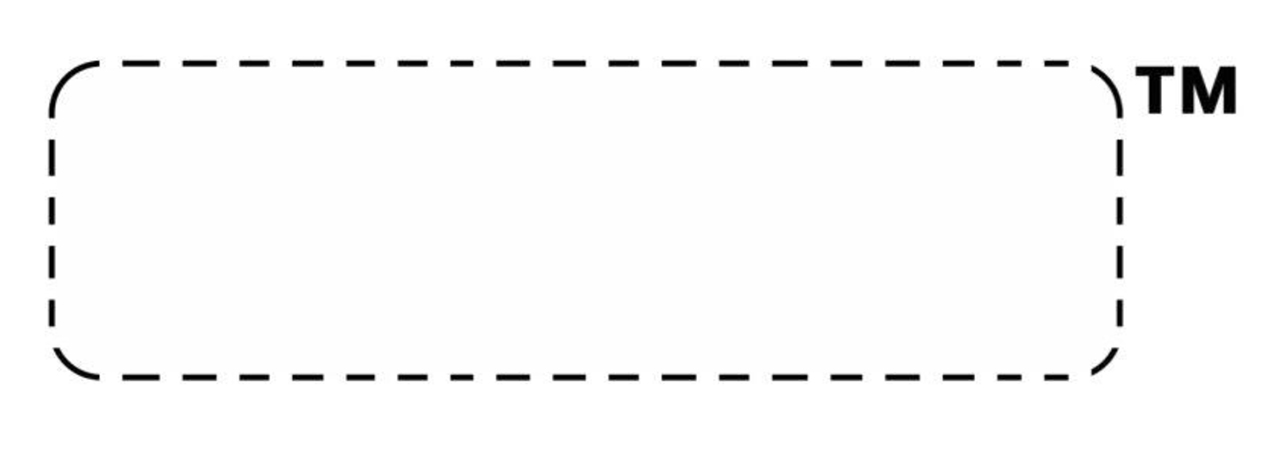Brandless has made a name for itself by bucking the ostentatious logo trend, shunning branding in its quest for a widespread selection of a logo-free products. But just how logo-less is Brandless’ existence? Well, not entirely. Launched this past July and headquartered in San Francisco, the e-commerce site might be doing away with traditional branding but that does not mean it has not adopted a certain type of branding of its own. One need not look further than the U.S. Patent and Trademark Office (“USPTO”) to see what Brandless is up to … on a branding front.
As first reported by BrandChannel, the nearly one-year-old company filed an interesting trademark application for registration last June, one month before its launch. Unlike the Gucci’s or the Fendi’s of the world, for instance, which maintain growing arsenals of trademark registrations that cover their brand names and oftentimes, initial-heavy monogram patterns, Brandless’ application extends to “a white rectangle with rounded edges. To the outside upper right hand corner of said rectangle reads the terms TM.”
Yes, Brandless’ branding consists of a white rectangle and a small TM symbol. Those that have encountered the brand’s products will know that inside that white rectangle is where Brandless includes the name of the product. “Body Lotion,” for instance, and some qualifying facts, such as, “Soothing Aloe, No Parabens, No Animal Testing, Brandless.” It is also used as the brand’s logo, as it, in some instances, includes the word “BRANDLESS” inside the rectangle.
Brandless’ application is still pending before the USPTO and the hold up stems from a couple of “Office Actions” – or letters sent by the USPTO to notify an applicant about issues with his application, including the reason why registration is being refused or what requirements must be satisfied.

In its Office Actions, the USPTO cites an array of issues with Brandless’ mark, including that since colors are not inherently distinctive (Brandless specifically claims rights in the white rectangle), Brandless must present sufficient proof that consumers have come to associate the white box with its brand. This is something the USPTO says is almost impossible to prove due to the “widespread usage of white, rounded labels in the marketplace.”
The USPTO also took issue with Brandless’ inclusion of the TM symbol, holding that the symbol, itself, which is used by brands to indicate a common law-protected (i.e., unregistered) trademark is “unregistrable material.” Brandless has six months to respond to the USPTO’s latest Office Action, which was sent in early March.
More interesting that the brand’s trademark troubles is its venture into branding. Brandless’ trademark registration quest suggests that even for brands that explicitly attempt to eliminate branding – in Brandless’ case, it says it is removing brand in order to banish BrandTax, or “the hidden costs you pay for a national brand” – branding continues to play a significant role … even if the branding at issue is minimal.
Minimalist-inspired branding is still branding, after all.
UPDATED (May 9, 2019): Following its receipt of a third Office Action, Brandless abandoned its application for registration for the rectangular mark. In its third and final Office Action dated September 25, 2018, the USPTO’s examiner maintained the previous refusal to register on the basis that “the applied-for mark in the drawing and as depicted on the goods in [Brandless’] evidentiary submissions is nondistinctive and fails to function as a trademark for [Brandless’] goods and to identify and distinguish them from others. ” As a result of “its nondescript nature and common carrier design, [the rectangular graphic] does not function separately as a mark,” the examiner asserted, noting that “most common geometric shapes, such as rectangles, circles, ovals, triangles, diamonds, or stars, are not considered inherently distinctive.”
The USPTO also reiterated its determination that in order to be (potentially) eligible for registration, Brandless “must submit a new drawing showing the TM symbol deleted from the mark; this matter is not part of the mark and is not registrable,” despite the brand’s previous argument that it “wishes to claim the TM symbol as [its] own design matter.”














